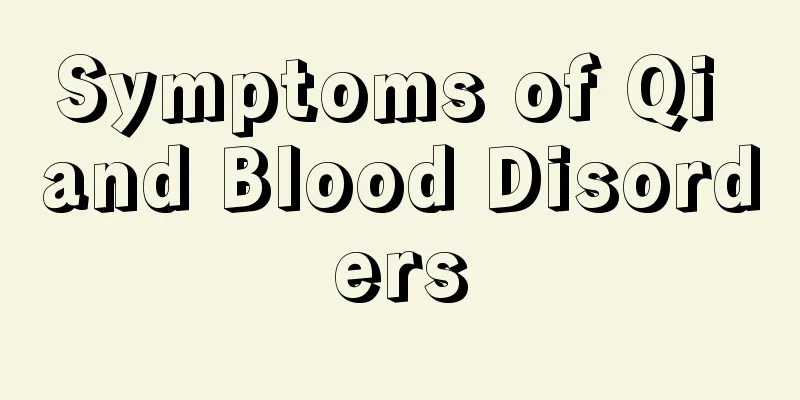Symptoms of Qi and Blood Disorders

|
Qi and blood imbalance is a relatively common disease at present. It comes from many meridians and organ structures in the body. Most people with qi and blood imbalance will have a dull and pale complexion, weak body, and often have little menstrual blood or blood clots. The most important thing is that the menstrual period and ovulation period are irregular, and the normal pregnancy function is often affected by qi and blood imbalance. Basic Introduction Qi and blood are the material basis for the physiological activities of all tissues and organs in the human body, including the internal organs and meridians, and the generation and circulation of qi and blood depend on the normal physiological functions of the internal organs. Therefore, the disease of the internal organs will inevitably affect the Qi and blood of the whole body, and the disease of Qi and blood will inevitably affect the internal organs. Pathological changes in qi and blood are always reflected through abnormalities in the physiological functions of the internal organs. Therefore, there is a close relationship between Qi and blood. So under pathological conditions, Qi diseases will inevitably affect blood, and blood diseases will also affect Qi, among which diseases of Qi and blood are especially common. Disharmony of Qi and blood is not only the basis for various pathological mechanisms of internal organs, meridians, etc., but also the basis for analyzing and studying the mechanisms of various diseases. Qi and blood imbalance refers to pathological changes such as the deficiency of Qi or blood and the abnormality of their respective physiological functions, as well as the imbalance in the relationship between Qi and blood. Qi disorders mainly include insufficient Qi production, excessive consumption or decline in certain functions of Qi, and abnormal Qi movement, that is, the formation of pathological conditions such as Qi stagnation, Qi reversal, Qi collapse, Qi blockage or Qi loss. It mainly manifests itself in two aspects: one is the biochemical deficiency or excessive consumption of blood, or the decline of the nourishing function of blood, thus forming a pathological state of blood deficiency. The second is abnormal blood circulation, either slow blood flow or disordered blood flow, which leads to pathological changes such as blood stasis, blood heat, and bleeding. Qi belongs to Yang and blood belongs to Yin. There is a yin-yang relationship between Qi and blood, which is one of mutual dependence and mutual use. Once, the main clinical manifestations are symptoms such as qi stagnation and blood stasis, qi failure to retain blood, qi loss with blood, qi and blood deficiency, qi and blood disharmony and failure to nourish meridians. Item tags: TCM pathological diagnosis, basic theory of TCM, TCM, Chinese medicine |
>>: What to do if pregnant women have vaginal pain
Recommend
Why do I gain weight if I don't have my period?
Some female friends are overweight, have irregula...
Uncover the cause of endocrine disorders: high heels are to blame
1. Long-term wearing of high heels causes endocri...
Can I eat before having an abortion?
Abortion surgery is the same as other surgeries. ...
Parenting: 46% of mothers do not allow their children to see their full Facebook profile
According to foreign media reports, 90% of Americ...
Abortion for twin pregnancy
In fact, the probability of getting pregnant with...
Pink discharge after menstruation
Women's lower body will always secrete some s...
Less menstrual flow one month after miscarriage
Is it normal to have less menstrual flow in the f...
The endometrium is uneven and pregnant
If the uterine wall is indeed confirmed to be too...
What to do about obesity and amenorrhea
With the development of society and the continuou...
Will the amount of vaginal discharge increase before menstruation?
Menstruation is a very common physiological pheno...
Is breast hyperplasia hereditary?
Many women suffer from breast hyperplasia, some a...
What happens if your period comes early?
Women have to go through many challenges in their...
Why I didn't get pregnant during ovulation?
The ovulation period is the time when a woman'...
Methods that help break water and see blood
Many pregnant mothers feel anxious when their due...









